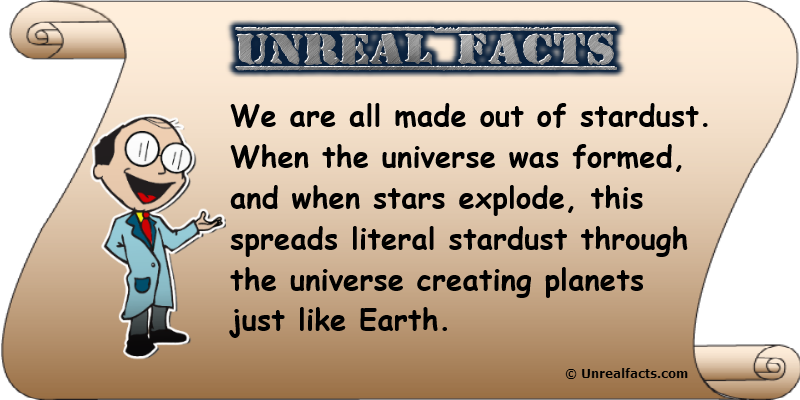[aio_button align=”right” animation=”none” color=”gray” size=”medium” icon=”none” text=”NEXT PAGE” relationship=”dofollow” url=”https://unrealfacts.com/6-unbelievable-solar-system-facts-kids-might-love/2/”]
When it comes to our own neighborhood in the universe, it’s really a pretty small place. Even though on a galactic scale it’s small, there’s a lot that we don’t yet know about. But the things that we do know are simply amazing. So to celebrate the wonders of the universe in which we live in, we are presenting you with our amazing list of solar system facts.
Facts 1 to 7
1 World’s Largest Scale Model Solar System
The solar system we live in is a pretty big thing, so making a model to scale would be pretty difficult. There are many models that can be purchased from model or toy stores, but often the scale isn’t correct, although it is close enough for most applications. These models are usually small enough to fit inside a persons room without to much difficulty, and sometimes can be hung from the ceiling. Sweden however, took model making to the next level.
The Swedes have built the worlds biggest scale model of the solar system. It is in the scale of 1:20 million and stretches 950 kilometres along the Baltic Sea. At the furthest point south, in Stockholm, is the Sun. It is represented by the Ericsson Globe, which is the worlds largest hemispherical building. The model includes all of the planets along with other smaller bodies such as dwarf planets, Halley’s Comet and even the Moon.
2 We Are Made Of Stardust
Did you know that we are made of stardust? As fanciful as this sounds, there’s actually a lot of credence to the claim, and it’s backed up with science! So how is it that we are made of stardust?
It all comes down to the Big Bang, the very beginning of the universe and all of the galaxies, stars, planets, moons, comets and, well everything in it. It isn’t too hard to see that everything in the universe would have had a similar origin, even us humans. It’s because every element that is on our rock, Earth, was formed in the heart of a star, like our sun.
It’s easy in our busy lives today to forget about the wider universe. It’s full of wonder and beauty. How many of us actually look at the stars? When I say look, I mean appreciate their beauty and wonder about them. Gazing for hours on end at their beauty. While we look upon them we see a little glistening dot of light, but the reality is that they are a massive ball of fire, a continuous nuclear fusion reaction that has been going on for millions of years. It’s these very reactions that create the elements of the universe. The elements that make up every part of out bodies.
How are we made of stardust?
Now we delve into chemistry a little. When stars form they do so by small particles of hydrogen and helium binding together. Over time these form into larger clouds, and with gravity they become denser. This will continue as the sun builds in size and mass.
The nuclear reactions that take place are complex. Initially hydrogen is converted to helium. The helium is then converted to beryllium and carbon when the hydrogen has been completely depleted. This process will continue until the sun reaches iron. But that obviously leaves us a lot of elements short to say that we are made of stardust.
Stars just don’t die when they turn to iron. They will go supernova. A massive star will go supernova when they have reached the end of their life. When it goes supernove it will release a lot of high energy, which also creates the other heavier elements. The elements are distributed though the universe with the massive explosion. This stardust goes on to create planets just like Earth.
3 Earth Has Extra Moons!
Did you know that Earth gets temporary additional moons? Yeah, we’re serious here. But don’t be thinking that they are anything like the ones orbiting the other planets. They are not, but they are still very interesting.
In the fall of 2006 astronomers discovered what they initially thought was a spent rocket stage. The colour it had was similar to the white that NASA uses on their rockets, but it turned out to be a natural object. Measuring only a few metres across, it still qualified as a moon. By late June of 2007 it had departed Earth;s orbit. In its time it had stayed long enough to complete at least 3 orbits of Earth.
Following this discovery, a team of astrophysicists have determined that Earth nearly always has additional moons. These moons are only temporary visitors, staying for a short period of time before leaving Earth’s gravitational pull. These small moons are known as near Earth objects (NEO) and are pulled into orbit by the gravitational pull from both the Earth and the Moon. The team believe that at any given time there should be at least 1 satellite measuring 1 metre or larger orbiting Earth.
4 Dwarf Planets, What Are They?
Pluto was demoted to dwarf planet status with the discovery of other bodies in our solar system that were too big to classify as an asteroid, and too small to call a planet. There are a total of 5 dwarf planets. Here they are in order of size.. Eris, Pluto, Haumea, Makemake and Ceres which is the closest of the dwarf planets to Earth. All the planets are smaller than the moon which orbit us.
5 The Sun Affects The Tides
Most people know that the ocean tides are caused by the moon. The way it works is that the gravitational pull of the moon pulls the ocean towards it, causing high and low tides. The tide is high when the moon is closer to that part of the world, and lower on the other side. Did you know that the sun also affects the tides?
When the sun and the moon line up the Earth will experience very high tides, and when the sun and the moon are on opposite sides of the Earth the tides will be very small. The amount of pull the sun has on the oceans is 46% that of the moon, even though the sun is 400 times further away from the Earth than the moon.
6 Buying The Correct Telescope To See The Wonderful Place
OK, I know that this isn’t really a fact. It’s more of a useful guide to buying a telescope. So what is it that you should look for when buying your first telescope?
There are a lot of things to be mindful of when making such a big purchase. A lot of the time the companies that are trying to make money will decorate boxes with beautiful pictures of galaxies and nebulae. They will also make claims as to how much magnification a telescope can produce. All of this is rubbish, and not worth the cardboard it was printed on.
The first thing you have to do is imagine that the telescope is in a blank box. To tell you the truth, the best telescopes will probably come in a plain brown box. You also need to forget about magnification. The highest that most telescopes can magnify are 300 to 400 times at the most, and they are for the biggest telescopes on the market. Beyond that and the image becomes blurred by the atmosphere. The most important thing is aperture.
Aperture is the amount of light that enters the telescope.The more light the more detail that will be revealed, even when the image is only small. Aperture can be measured by how wide the telescope it. If you have a telescope that is of low aperture, as in a narrow thin telescope, and a higher magnification, it will only make an image bigger, and if the image is poor, it will magnify that as well.
Imagine a low resolution image in a camera. Try and make it bigger it becomes unrecognizable. A wider lens or mirror acts the same as giving the image more pixels, it gives the user a clearer image and far more detail.
For a cheap entry telescope I would suggest buying a Dobsonian. They are cheap and simple to erect and use. You will get the most bang for your buck, and also get to explore the universe the same way that Copernicus did.
7 How many meteors enter the Earth’s atmosphere every day?
Short answer, a lot.
The long answer.
A study in New Zealand in the mid 1990’s, that was conducted over a year, found that there were, on average 350,000 small meteors that enter the Earth’s atmosphere over a year. The study was conducted using 2 or more installations of radar monitors for triangulation. This study detected meteors from 10 – 100 microns in size.
Given the small area of sky used in the study, Drs. A.D. Taylor, W. J. Baggaley and D. I. Street at the University of Adelaide determined that on any given day 19,000 meteors will enter the Earth’s atmosphere weighing 100 grams (3.5 ounces) or more. Of these only only about 10 will be recovered. Even more amazing is that the Earth will gain around 100 tons of dust sized meteoroids every day!
[aio_button align=”right” animation=”none” color=”gray” size=”large” icon=”none” text=”NEXT PAGE” relationship=”dofollow” url=”https://unrealfacts.com/6-unbelievable-solar-system-facts-kids-might-love/2/”]













